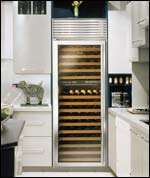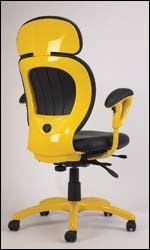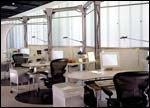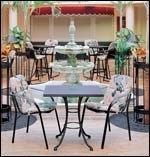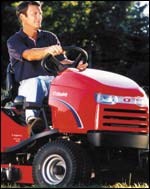Powder Coating Expands Its Coverage in the 21st Century
Powder coating remains the fastest growing industrial finishing method in North America, currently representing about 15 percent of the total market. About 5,000 industrial finishers in North America apply powder to a countless array of products for a high quality and durable finish, resisting scratches, corrosion, abrasion, chemicals and detergents. The powder coating process also maximizes production, cuts costs, improves efficiency and offers maximum compliance with environmental regulations.
#regulation #economics #sustainability
Advantages Of Powder Coating
Because powder coating contains no solvents, the process emits negligible, if any, polluting volatile organic compounds into the atmosphere and does not require venting, filtering and solvent recovery systems as is necessary with liquid finishing. Exhaust air from the coating booth can be safely returned to the coating room and less oven air is exhausted to the outside, making the powder coating process a safer and cleaner finishing alternative and saves considerable energy and cost.
Most powder coating overspray, up to 98%, can be readily retrieved and re-used. The unused powder can be reclaimed by a recovery unit and returned to a feed hopper for recirculating through the system. The waste that results is negligible, and can be disposed of easily and economically.
Featured Content
Powder coating requires no drying or flash-off time, so parts can be racked closer together on a conveyor, and more parts can be coated automatically. Powder coating does not run, drip or sag, resulting in significantly lower reject rates.
Additional cost savings with powder coating include minimum operator training and supervision, employee preference in working with dry powder over liquid paints, reduced housekeeping problems and minimum contamination of clothing. Also, compliance with federal and state regulations is easier, saving both time and money.
In short, powder coating provides the “Five E’s”:
- Economy
- Efficiency
- Energy Savings
- Environmental Compliance
-
Excellence of Finish
How Powder Coating Works
Powder coating was introduced in North America more than 40 years ago. It is a dry finishing process, using finely ground particles of pigment and resin, which are electrostatically charged and sprayed onto electrically grounded parts. The charged powder particles adhere to the parts and are held there until melted and fused into a uniformally flowing coating in a curing oven.
Powder Materials
There are two types of powder coatings—thermoplastic and thermosetting. In brief, a thermoplastic powder coating is one that melts and flows when heat is applied, but continues to have the same chemical composition once it cools and solidifies.
Thermosetting powder coatings also melt when exposed to heat. After they flow into a uniform thin layer, however, they chemically cross-link within themselves or with other reactive components. The final coating has a different chemical structure than the basic resin, is heat stable and, unlike thermoplastic powder after curing, will not soften back to the liquid phase when re-heated.
Pretreatment
Parts to be powder coated first are exposed to a pretreatment operation to ensure that the surface to be coated is clean and free of grease, dust, oils, rust and other residue. The pretreatment process is normally conducted in a series of spray chambers where alkali cleaners, iron or zinc conversion coatings and rinses are applied. Parts of various sizes and shapes may be cleaned with pressurized or heated sprays. Dip tanks may be used instead of spray for some applications. Powder coating lines usually incorporate a phosphate application step that adds corrosion protection and improves the adhesion of the coating.
The specific pretreatment process selected is a function of the characteristics of the coating, the substrate and the end use of the product being coated. Pretreatments most often used in powder coating are iron phosphate for steel, zinc phosphate for galvanized or steel substrates and chrome phosphates for aluminum substrates. After the parts have passed through all of the pretreatment steps, they are normally dried in a low-temperature dry-off oven. After drying, the parts are ready to be powder coated.
Newer methods in pretreatment include improved alkali metal iron phosphates plus non-chrome seal systems, yielding improved corrosion protection on steel, galvanized steel and aluminum alloys. Improved nickel-free zinc phosphates avoid the environmental issues related to use and disposal.
Dry-in-place pretreatment products, such as a seal rinse over an alkali metal phosphate or as the sole pretreatment for a clean metal substrate, can reduce the number of stages required before powder coating application. Chrome dried-in-place treatments are effective on multi-metal substrates.
And an autodeposition coating as pretreatment or primer for powder coating eliminates phosphates, has a low temperature curing requirement at 210°F and is an environmentally friendly pretreatment option. The powder applied after this pretreatment method must also be cured at similarly low temperatures, under 250°F, in order to maintain its performance, and works well with UV-curable powder coatings.
Powder Application
The powder coating application process uses four types of equipment: the powder delivery system, the electrostatic spray gun system, the spray booth and the powder recovery system.
The delivery system consists of a powder storage container or feed hopper, and a pumping device that transports a mixture of powder and air into hoses or feed tubes. Some feed hoppers vibrate to help prevent clogging or clumping of powders prior to entry into the transport lines.
Electrostatic powder spray guns direct the flow of powder; control the pattern size, shape and density of the spray as it is released from the gun; charge the powder being sprayed and control the deposition rate and location of powder on the target. Spray guns are either manual (hand-held) or automatic (mounted to a fixed stand or gun mover).
The electrostatic process encourages the powder to “wrap” around the product or deposit on the surfaces of the product that are not directly in the path of the gun.
The most common application method is with corona charging guns which generate a high-voltage, low-amperage electrostatic field between the electrode and the product being coated. Powder particles that pass through the ionized electrostatic field at the tip of the electrode become charged and are deposited on the electrically grounded surface of the part.
The powder particles in a tribocharging electric gun receive an electrostatic charge as a result of friction which occurs when powder particles rub a solid insulator or conductor inside the gun. The resulting charge is accomplished by stripping electrons from the powder, producing positively charged powder. Because there is no actual electrostatic field, the charged particles migrate toward the grounded part and can deposit in an even layer over the entire surface of the part.
The powder bell uses a turbine that rotates an enclosed powder bell head. Powder is delivered to the bell head and ejected by centrifugal force. The powder passes through an electric field between the bell head or an externally mounted electrode and either the grounded object to be coated or a counter electrode positioned behind the bell’s head. The powder is subject to the normal corona charging mechanism, ejecting the powder evenly over a large area.
The tribo disk features a non-rotating disk positioned vertically inside a loop and parts are conveyed through the loop as the disk oscillates up and down, applying overlapping layers of powder coating on the parts’ surface. The tribostatic charging method is employed, and the disk forms a uniform, horizontal spray pattern of about 2.5 ft in diameter.
The use of oscillators, reciprocators and robots to control spray equipment reduces labor costs and provides more consistent coverage. Gun triggering—turning the gun on and off using a device that can sense when the part is properly positioned—will reduce overspray material, which means lower material and maintenance costs.
Other improvements made to spray guns involve variations in the spray patterns to improve the efficiency with which they deposit powder on the substrate, and allow one gun to be used on different parts and configurations. There are nozzles more resistant to clogging and ways to continuously clean charging electrodes.
Alternate application methods include fluidized beds and electrostatic fluidized beds. A fluidized bed is a fixed container in which powder is suspended in a continuous stream of air. Preheated objects may be coated by dipping directly into a fluidized bed. Flamespray, used to apply thermoplastic powder, makes use of a heat gun where the powder is propelled through the flame using compressed air. The heat of the flame melts the powder, eliminating the need for ovens.
The powder spray booth is designed to safely contain the powder so that overspray cannot migrate into other areas. The entrance and exit openings must be properly sized to allow clearance of the largest product part. The airflows through the booth must be sufficient to channel all overspray to the recovery system but not so forceful that it disrupts the powder deposition and retention on the part.
The batch booth is designed for coating individual parts or groups of parts that are handled using batch production methods. Conveyorized booths are designed for the continuous coating of the product on an overhead conveyor line in medium to high production operations, coating parts of various sizes or shapes.
Chain-on-edge booths are specifically designed for use with an inverted conveyor that has spindles or carriers for holding the parts. Flat-line booths, primarily designed for the one-sided coating of two-dimensional parts of minimal thickness, use a horizontal conveyor—a belt, a bar and pin, or driven roller type. The conveyor passes through the powder booth carrying the part to be coated on its surface.
The powder recovery systems make use of either cyclones or cartridge filter modules that can be dedicated to each color and easily removed and replaced when a color change is needed. Equipment manufacturers have made significant design improvements in powder spray booths that both allow color changes to be made with minimal downtime and allow the recovery of a high percentage of the overspray, which can raise powder use to nearly 100 percent.
Curing
There are various methods used in the curing of powder coated parts. Convection ovens can be either gas or electric. Air is heated and circulated inside the oven around the powder coated parts. The parts attain the temperature within the oven.
Infrared (IR) ovens using either gas or electricity as their energy source emit radiation in the IR wavelength band. This radiated energy is absorbed by the powder and substrate immediately below the powder but the entire part need not be heated to cure temperature. This allows a relatively rapid heat rise causing the powder to flow and cure when exposed for a sufficient time.
Combination ovens generally use IR as the first zone to melt the powder quickly. The following convection zone can then use rather high velocity currents since there is no danger of disturbing the powder. These higher velocities permit faster heat transfer and a shorter cure time.
Induction ovens are normally used to pre-heat parts prior to powder coating to help elevate film
build. These are used in fusion bonded epoxy coating applications, such as re-bar and pipe coating, using high line speeds with a coating thickness of over 10 mils.
Heat sensitive substrates, such as medium density fiberboard, are cured in two ways. Thermal curing uses infrared, convection or a combination of the two, and specially formulated low-temperature-curing powder, which is sprayed onto the MDF board that has been heated to bring some of its moisture to the surface.
With ultraviolet curing, the melt and flow can be separated from the curing process and minimal heat is required to cure the powder. The parts enter an infrared or convection oven first, and then are briefly exposed to ultraviolet light for final curing and hardening of the finish.
Markets and Uses
Today, powder coatings are available in every color, and a variety of textures and glosses. Powder coatings are now used on hundreds of parts and products. Almost all metal patio furniture is currently powder coated, along with the majority of all metal display racks, store shelving, and shop fixtures. Wire-formed products such as springs and storage baskets for the home and office are often powder coated.
The appliance industry is the largest single market sector for thermosetting powders. Even, thin films with high levels of resistance to chips, impact, detergents, and chemicals are critical to the appliance industry. Current uses include refrigerators, washer tops and lids, dryer drums, range housings, dishwashers, microwave oven cavities, freezer cabinets, and external air conditioner units. And with the increased demand from homeowners for custom colors on their major appliances, powder coating’s unlimited color choices can meet their specific needs.
The automotive industry powder coats wheels, grills, bumpers, hubcaps, door handles, decorative trim, radiators, air bag components, engine blocks, and numerous under-the-hood parts and components, along with trailers and trailer hitches. Powder clearcoats are now being applied by BMW and Volvo over automotive exterior basecoats. And the exterior body intermediate coat - the primer-surfacer - on some models of Ford, GM, and Chrysler automobiles are powder coated.
Pat Goss, a nationally known automotive consultant who has co-hosted the PBS Network show “Motor Week,” states, “In preserving the car’s finish, powder topcoats are more resistant to things in the atmosphere like acid rain and the sun’s ultraviolet rays, and this means the finish is going to look better for a lot longer.”
In the automotive aftermarket, high-heat resistant powder coatings are used to powder coat car mufflers to resist corrosion, protect against nicks, and prolong the life of the muffler. Pick-up truck and SUV owners can purchase powder coated side steps, bed rails, luggage racks, and toolboxes as dealership add-ons or from aftermarket stores and catalogs.
Powder manufacturers are also working with the automotive industry to perfect powder coating on plastic items such as wheel covers, rear-view mirrors, door handles, air conditioning vents, and interior clothes hooks.
And as more powder coaters are able to accommodate large parts, off-road vehicle frames such as agricultural and construction equipment are being powder coated, with good UV and weather protection, and high resistance to salt spray and fertilizer.
The architectural and building market powder coats aluminum extrusions used on windows, doorframes, storefronts, shelters and gazebos, fixtures, and modular furniture. New vertical lines for powder coating aluminum extrusions installed in the United States last year promise to revolutionize the U.S. architectural market, by speeding up production and coating time for aluminum extrusions and improving coating quality. Many highway and building projects use powder coating on light poles, stadium seating, guard rails, posts, and fencing, even the new Las Vegas monorail.
In the lawn and garden market, powder coating is used on wheelbarrows, lawn mowers, lawn sprinklers, snowblowers, show shovels, barbecue grills, propane tanks, and garden tools.
Everyday uses for powder coated products include lighting fixtures, antennas, and electrical components. Fitness buffs use powder coated bicycles, camping equipment, golf clubs and golf carts, and exercise equipment. Office workers use powder coated file drawers, computer cabinets, desks, and other furniture. Parents have powder coated baby strollers, cribs, playpens, car seats, toys, and wagons. Consumers also own electronic components, bathroom scales, toolboxes, laptop computers, cell phones, and fire extinguishers with powder coated parts and components.
New applications for powder coating are increasing all the time. Ongoing research and developments in powder coating materials and new methods of applying powder promise even more uses that may be unimaginable today.
RELATED CONTENT
-
Advancements in Automated Polishing, Buffing and Deburring
As we enter the new millennium, it might be constructive to critique the many changes we are experiencing in the way we must do business to survive, grow and prosper in an ever changing and expanding global market.
-
2020 Top Shops Benchmarking Survey Results for Electroplating & Anodizing
North American Market Shows Mixed Results for the 2019 Reporting Year
-
Automotive Powder Coating
The automotive market and its requirements for powders...


